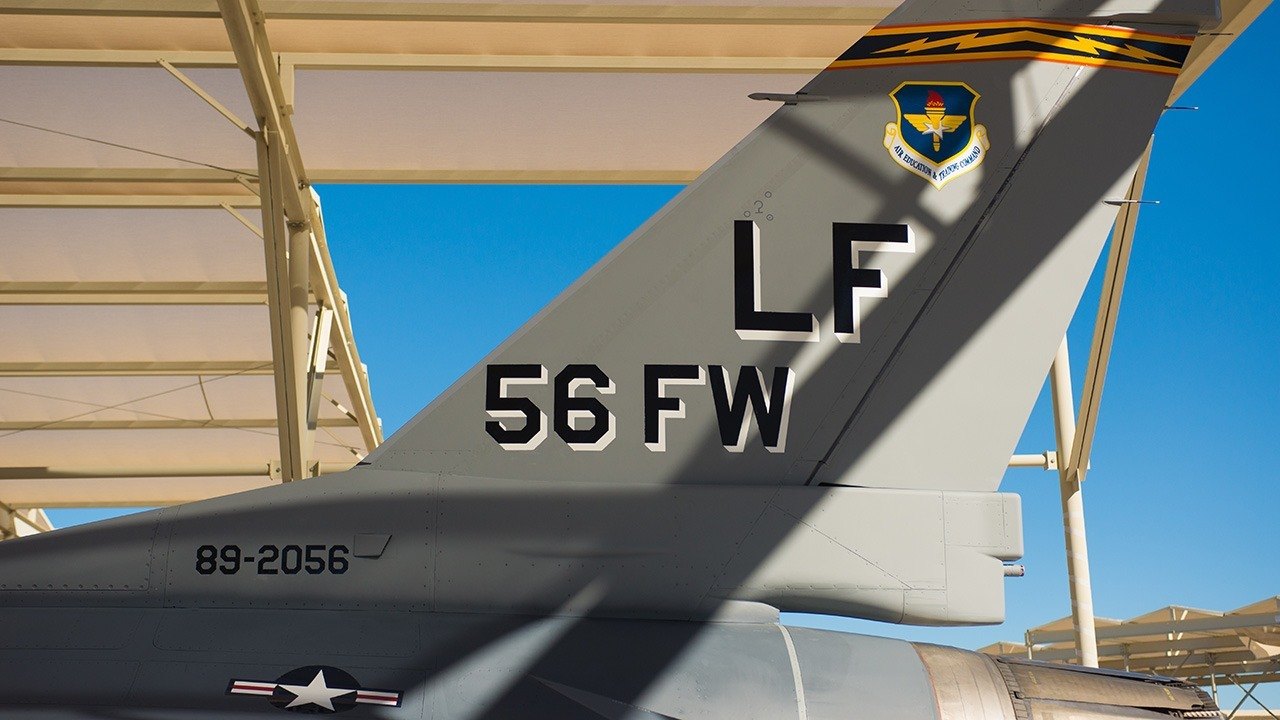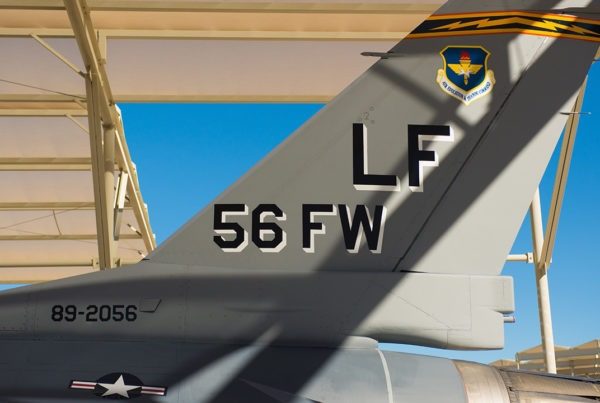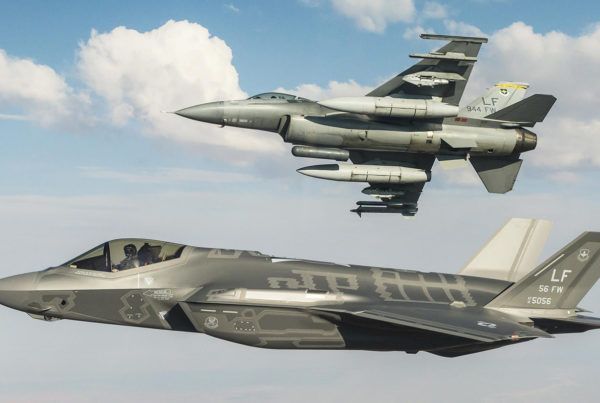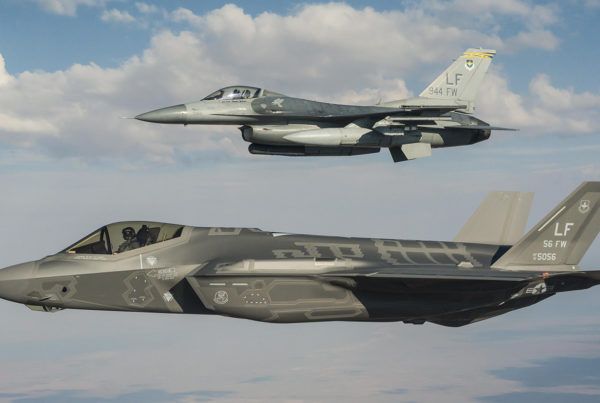By Tom Browning, USAF Retired
Luke Air Force Base has been home to the “schoolhouse” of the Air Force since the 1940s and has become the premier location for Air Force fighter pilot training in the nation. As the Air Force seeks a second training site for the F-35 or Joint Strike Fighter, Arizona should lead the competition due to a number of key decisions made by the state and local leadership, the vastness of the training environment and a number of variables that make Luke AFB unique among its competition.
Airspace
Arizona is unmatched in its availability of range space and military training routes. With a combination of military operations areas, restricted airspace, Barry M. Goldwater Range (BMGR) and low-level training routes for accessing the entire network, Luke AFB is situated to take advantage of Arizona’s full complement of training environments. In particular, BMGR is a 1.7 million-acre open training area that allows for the use of a full complement of the most technologically advanced weaponry in live-fire exercises.
Quality of Life
The Air Force prides itself on ensuring a high quality of life for its airmen and officers, whether on-base activities or in the surrounding communities. Luke AFB is in Glendale, which is located in one of the largest metropolitan areas in the country. Our metro area features first-class arts and culture, education, family activities, shopping, pro sports and entertainment venues all within a short drive of the base. Additionally, the availability and affordability of housing within the surrounding communities give Luke AFB an added attractiveness for those servicemen and women looking to live off base in the surrounding neighborhoods.
Compatible Growth
Luke is and has been the Air Forces’ schoolhouse for decades and that mission has been secured through the actions of state and local leaders, who realized the importance of protecting and preserving the military mission at Luke. State statutes locked in protective development land-use requirements that, had development been left unchecked, might otherwise have allowed incompatible development to occur closer to the main fields and auxiliary fields on which Luke depends for its training mission.
These protections, in local zoning and state statute, have been held up around the nation as a model of how to protect a military installation from incompatible development and thus ensure the mission. What Arizona has done will ensure that the current mission of Luke AFB is unaffected and will go a long way towards securing a follow-on training mission, such as the F-35.
Community Support
Support from the community, elected officials, and support groups — such as Fighter Country Partnership — has been overwhelming throughout the years. Luke AFB and the support it receives from the surrounding community is unwavering and will be beneficial during the environmental impact study (EIS) process for determining the second training base for the F-35. Luke is well-positioned for that follow-on mission, and the future looks bright for Luke to continue its training mission far into the future.
———
Tom Browning is a retired brigadier general of the Air Force and former commander at Luke Air Force Base.








